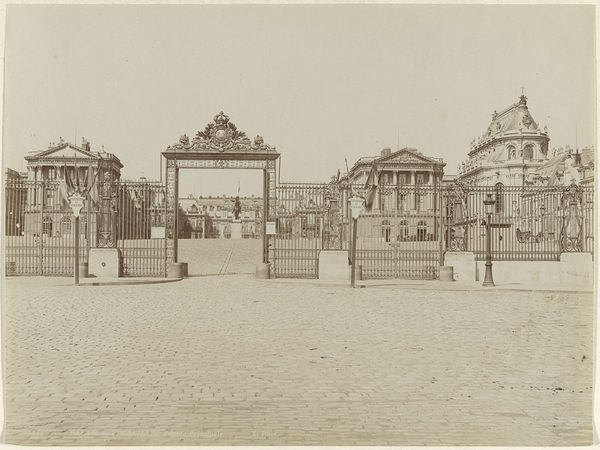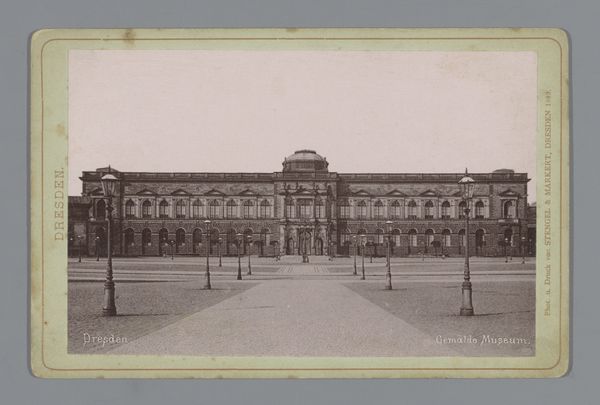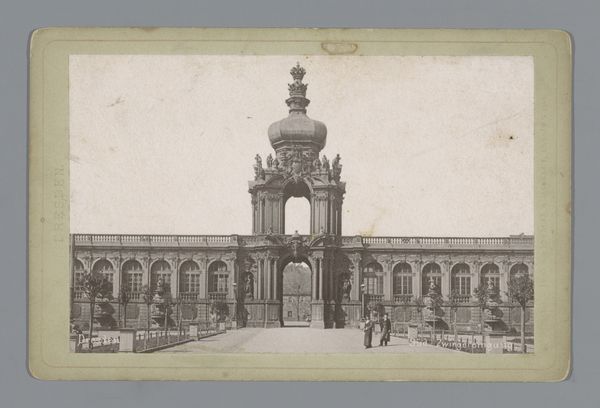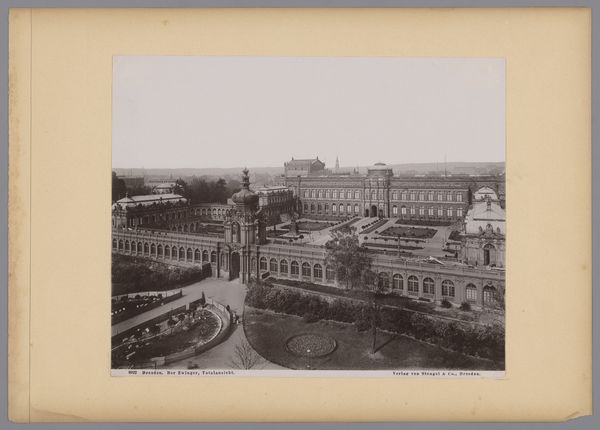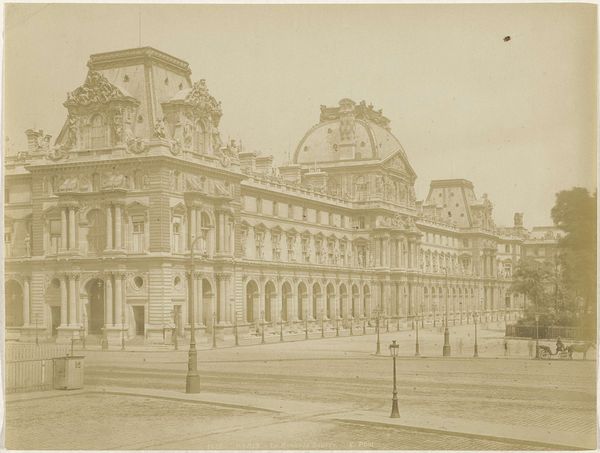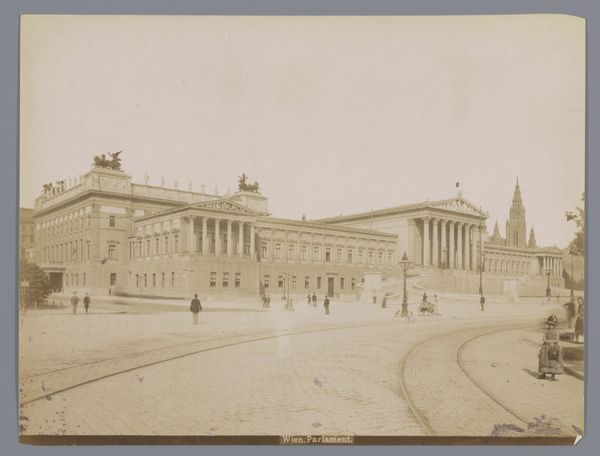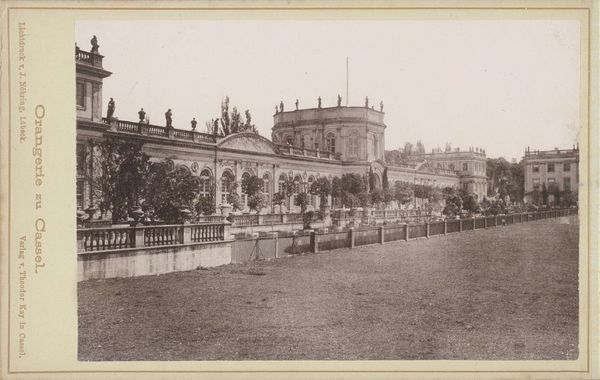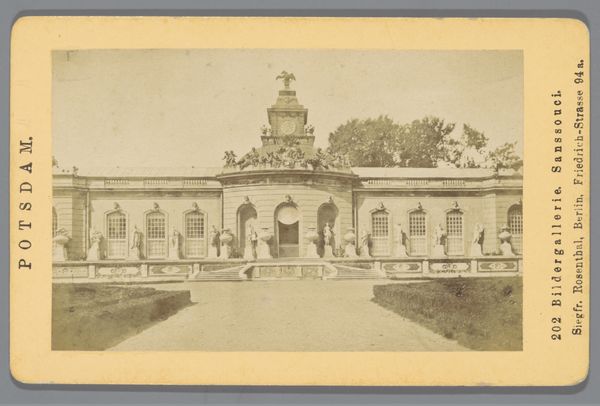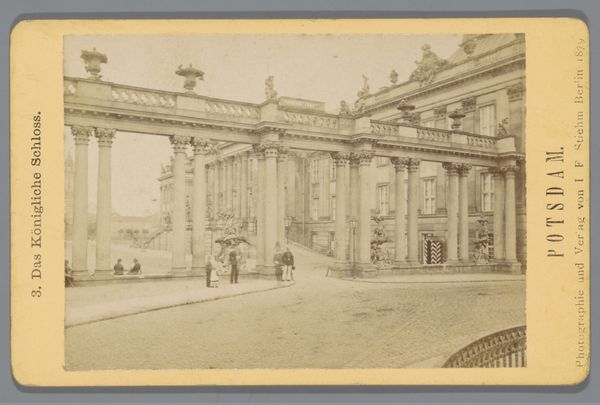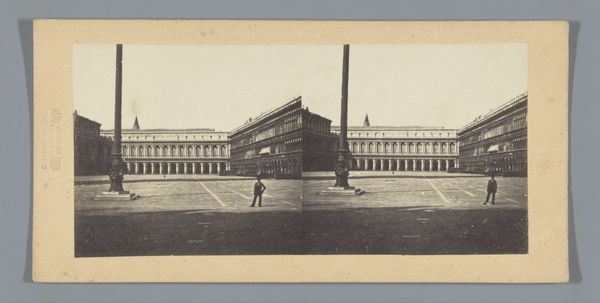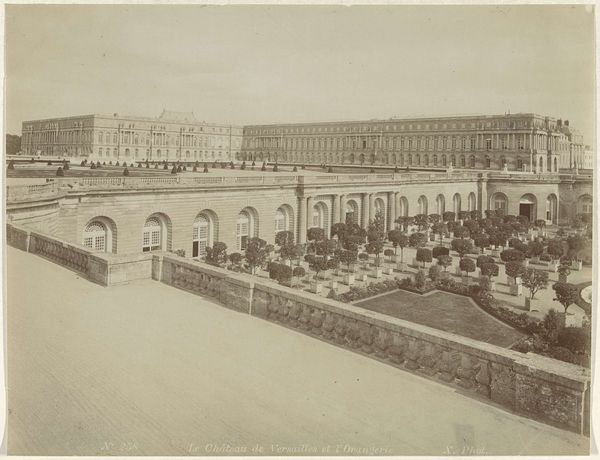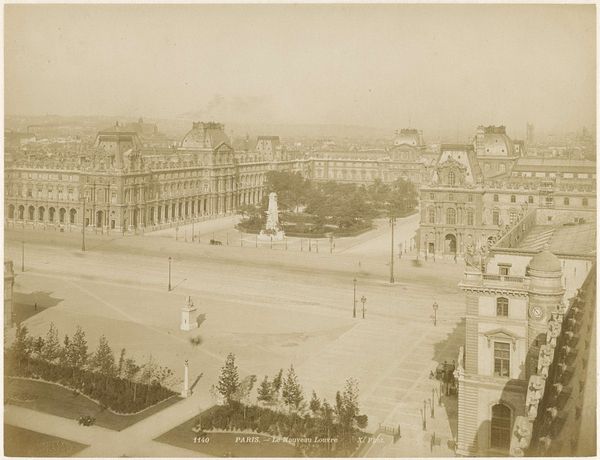
Dimensions: height 203 mm, width 285 mm
Copyright: Rijks Museum: Open Domain
Rudolph Tamme made this print of the Zwinger gate in Dresden sometime in the mid-19th century, using photography, a relatively new medium at the time. Photography, unlike painting or sculpture, is a mechanical process. The final image, like this one, depends on the alchemic interaction between light, treated paper, and a variety of chemicals. These materials, standardized through industrial manufacturing, allowed for the relatively easy reproduction of images, democratizing access to visual culture. In this albumen print, Tamme captured the baroque architecture with remarkable detail and a soft sepia tone that evokes a sense of nostalgia. The choice of this process, and the mass reproducibility that comes with it, has social implications, making this grand architectural achievement accessible to a wider audience, and preserving it for posterity. By focusing on photography's materiality and mode of production, we recognize its place not only in art history but also in the broader context of industrialization and cultural dissemination.
Comments
No comments
Be the first to comment and join the conversation on the ultimate creative platform.
